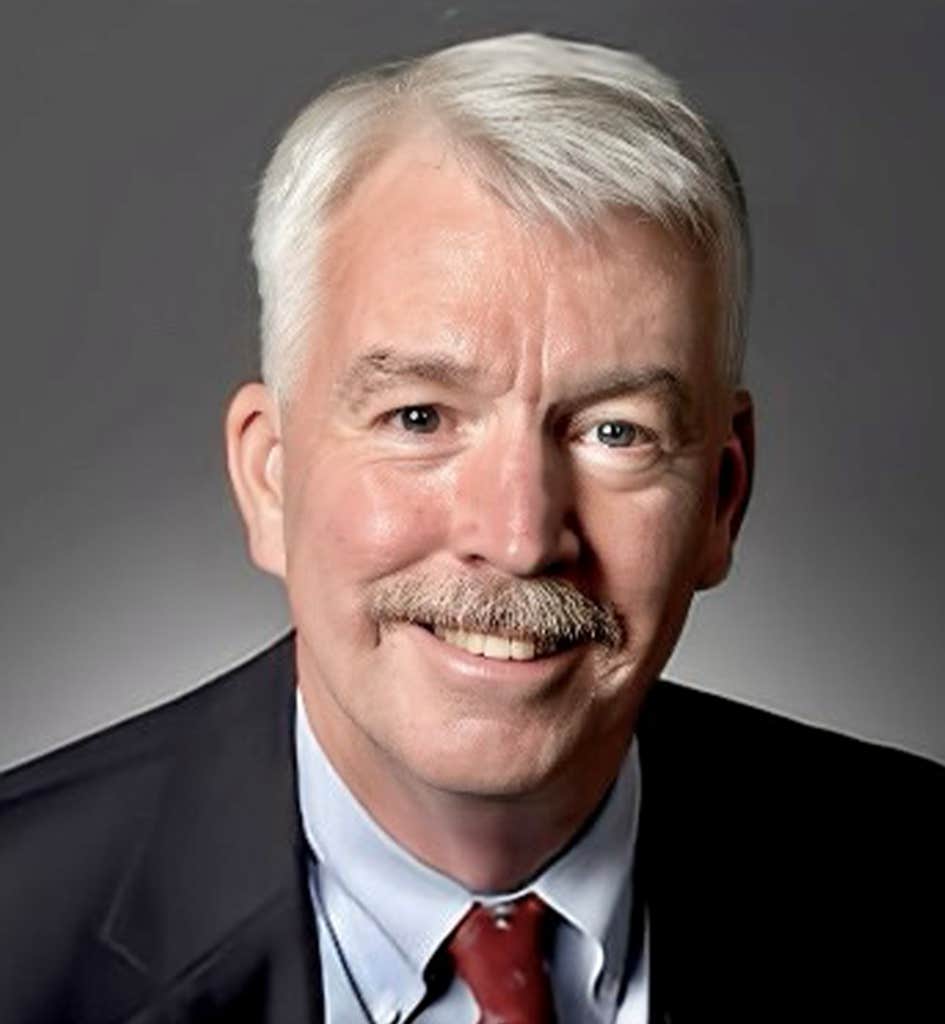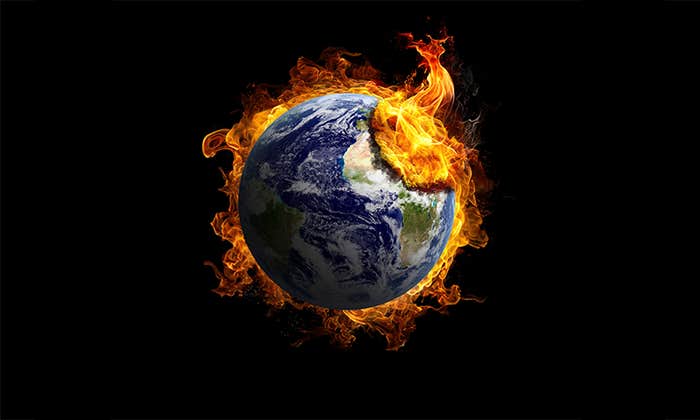The world is drowning in plastic. This much we know. It seems that every day greets us with fresh evidence that there is no escaping the plastic prison humanity has built for itself. In the final summation, plastic, for all its uses and abuses, is a pollutant. But there are some who believe that we can repair the damage that plastics have wrought. After all, the thinking goes, humans have successfully deployed science and policy action to reverse harms caused by other pollutants—chlorofluorocarbons chewing holes in the ozone and leaded gasoline damaging young brains, for example.
Philip Landrigan, director of Boston College’s Program for Global Public Health and the Common Good and of its Global Observatory on Planetary Health, is one such optimist. He and colleagues from universities and non-profits across the globe launched a monitoring effort this week to track not only the extent of the plastic pollution problem but also the emerging research on the effects of all this plastic on human and environmental health. Writing inThe Lancet, Landrigan and his co-authors announced the launch of the Lancet Countdown on health and plastics, noting the effort will deliver regular reports and encourage original research. “Continued worsening of plastics-associated harms is not inevitable,” they wrote in a report announcing the launch of the project in The Lancet.
The statistics they gather are striking. Global plastic output has exploded, increasing more than 250-fold in the past 72 years. “Without intervention,” Landrigan and his co-authors write, “it is projected that global plastic production will nearly triple by 2060.” Less than 10 percent of plastic used today is recycled, and 80 percent by weight of all plastic ever made is still present in the environment. The manufacture, use, and pollution of this plastic currently costs the world at least $1.5 trillion per year in health-related economic losses, and as much as 20 percent of all fossil fuels are expected to be used in plastic manufacture by 2050.
Nautilus spoke to Landrigan about the difference between necessary and unnecessary plastic, the petrochemical industry’s pivot from fossil fuel to plastic production, and the perils of magical thinking.

As you and your co-authors poured through thousands of reports and pieces of literature, what surprised you the most?
First and foremost, the sheer scale of the problem. I’ve been studying pollution since 2015 and chemical and plastic pollution since maybe 2018, and we’ve known it was out there. But it really was not until we got deep into this literature that we realized just how enormous the problem is. The numbers are just staggering. And the number that really blew me away was the economic number [$1.5 trillion in health-related economic losses due to plastic production and pollution] that our colleague Maureen Cropper and her team generated.
We’re gathering all this data that micro- and nano-plastic particles (MNPs) are in every tissue of the human body, at the top of Mount Everest, in the bottom of the Marianas Trench—everywhere. But we seem to have very little solid evidence for direct health effects from them. I think the science has yet to catch up. What kind of physiological harm to human health from these MNPs is most directly supported by the evidence?
That’s exactly right. We know much more about the chemicals, or at least about a subset of the chemicals, in plastics than we do about those particles.
I would say the best evidence so far is the study that came out in March of 2024, in the New England Journal of Medicine from a group of cardiologists in Naples, Italy. They took atherosclerotic plaque tissue that had been removed from the carotid arteries of patients. They looked for the presence of micro- and nano-plastic particles, and they found MNPs in about 60 percent of the patients. And then they tracked the patients over the next three years, and they found that the patients who had MNPs in their plaque were 4.5 times more likely to have a heart attack, a stroke, or to die over that time, as compared to the people in the population who did not have visible plastics in their plaque. Of course, it’s only one study. But a 4.5-fold—which is to say a 450 percent—increase in risk is really quite astonishing. Even though it’s only a single study, it has to be taken seriously. And it’s a finding that calls out urgently to be followed up.
As an individual, as a consumer, how would you suggest thinking about the perceived dangers of MNPS, and living your life in a world that’s filled with plastic?
I say to people, “Listen, you’re not going to be able to avoid plastics entirely in today’s world.” They’re too ubiquitous. And besides, many of the plastics that are out there really are necessary. There is no good substitute for them. Speaking as a recovering medical practitioner, I couldn’t have practiced pediatrics without IV tubing, without endoscopes, without laryngoscopes. I try to reassure people that they can’t completely avoid plastics, but that they can use their intelligence to distinguish the plastics that are unavoidable from those that can quite easily be avoided. And in medicine, for example, we have to go with those instruments that I just mentioned. But we certainly don’t need plastic sheets on beds. We don’t need plastic gowns on people, except under unusual circumstances. We don’t need three layers of plastic wrapping on a suture kit where we put in one or two stitches in the emergency room.
This distinction between the necessary and the unnecessary plastics is borne out in the macro statistics. Something like 40 percent of all plastic currently being made is single-use plastic—stuff that’s made to be used once and tossed.
The very rapid growth of that sector of plastic manufacturing reflects a deliberate strategy by the vertically integrated industry that produces plastic to pivot away from producing fossil fuels to making plastics.
Heart patients with microplastics in their plaque were 450 percent more likely to have a heart attack.
That was one of the interesting things that I read in the report—the plans by the Saudi Arabian Oil company and Shell to divert so much of their production toward plastic in the future.
Shell has just completed construction of a huge facility in Beaver County, Pennsylvania, which is out just west of Pittsburgh. The price tag I heard was $6 billion, and the purpose is to take fracked gas from Appalachia and turn it into plastic nurdles, which are basically the building blocks of plastic, which can then be shipped elsewhere to be fabricated into products.
That really tells you that it’s going to be hard, to say the least, to stem the tide of plastics going into the future. Do you have real hope that we can not only do that, but also understand its effects on both the environment and on human health—that we can really make a difference going into the next 20, 30, 50, years?
You know, despite all the opposition that’s out there, I’m fundamentally an optimist. I’m not sure that the right treaty is going to come out of the current negotiations. Whether we get the treaty that we need to protect human health between now and August 14, I have no doubt that global society will come to grips with the plastics problem over the next few years. Because the evidence and the outrage are just mounting so rapidly that the petrol companies won’t be able to have their will.
It was this bad in the 1990s. When people talked about climate, people said it could never be done. And yet we got the Paris Agreement. Now, I understand it’s not perfect: Trump has walked away from it. Other countries are following suit. And yet we are making progress. The greenhouse gas emissions are still going up, but the rate of increase has slowed as more and more green energy comes on line. I don’t know that the details will be at all the same, but I think we’ll see a similar reversal of trends in the case of plastics.
One thing that people are starting to talk about is reconfiguring the treaty process. If the UN negotiations break down yet again, because a small number of nations can thwart the will of the majority, perhaps it’s going to become necessary to take the treaty negotiations out of the UN and do them independently, under the sponsorship of one or more countries, like the EU or Canada. This is exactly the model that was followed a decade or so ago with the landmine treaty. When the UN negotiations broke down, Canada picked up the pieces, brought a number of nations together, and in the span of two or three weeks hammered out the treaty.
In the report you talk about air pollution, the pervasiveness of lead in several different products, the ozone depleting chemicals, etc. To me, those were in a way more tractable environmental problems. We knew that we were putting these accelerants, for example, in aerosol products, and we knew that if we took them out, there would probably be a benefit. And we were right.
As a young doc at [the Centers for Disease Control and Prevention] in the 1970s, I was very much involved in the work that led up to the removal of lead from gasoline. You’re right. It was one chemical, one source. But here, there’s also only one root source. It’s the petrochemical industry and their products. There are thousands of different products, to be sure, but there’s one root source, and I do think that ultimately, it’s tractable for that reason.
And we know how to do it. We’ve done it successfully for air pollution, for lead, for chlorofluorocarbons. We’re doing it now for mercury. And the playbook is pretty much the same in every case: You get an agreement, you hammer out regulations, you enforce, you penalize those who violate the regulations, and you incentivize people who are doing the right thing. It ultimately works. It just takes time.
Is there anything in your mind that differentiates the problem with plastic pollution and these other problems, such as lead or ozone depleting chemicals?
Number one, it’s certainly chemically far more complex. Number two, the plastics are going to be with us for a long time. Even if we were to stop production totally today—which, of course, is not going to happen—there are 8 billion tons of plastic waste, large and small, circulating in the biosphere. That stuff’s going to be there for a long time to come. Whereas the chlorofluorocarbons dissipated, the lead dissipated, air pollution cleaned up quite rapidly, this job is going to be with us for a long time. But if we get it right, we can reduce the pumping out of new plastic into the environment.
We know nothing about the toxicity of 75 percent of the chemicals in plastics. That’s just wrong.
The report lays out very clearly the goals of the global plastics treaty. What are your personal topmost goals for that effort?
With regard to the treaty, first and foremost, I’d like to see some kind of cap or limitation on global production of new plastic. Second, regulation of the chemicals that go into plastics. It’s unconscionable that we know nothing about the toxicity of 75 percent of the chemicals in plastics. That’s just wrong. The same companies that make pharmaceuticals gladly take those chemicals through extensive pre- and post-market assessment, and yet they fight to avoid any such assessment when it comes to plastic chemicals.
Then, at an infrastructure level, the treaty has to be properly financed, and there need to be provisions in the treaty that allow it to be updated and course corrections made as new science comes in. There’s a lot of other little things, but those are the big ones.
Are you wary that the current administration will not be willing to go along with the treaty?
I strongly suspect that the Trump administration will not go along with the treaty, if it has any teeth at all. But again, as I say, some of these reforms take time, and one just has to wait for the proper moment.
What crystallizes in your mind for what you want to see come out of the Lancet Countdown effort?
The model that we’re following is the model of the Lancet Climate Countdown, which has been up and about now for about nine years. They started small, and they’ve grown over time, and they’ve done a really excellent job of tracking the health impacts of climate change. And I think, more than the specifics, the overarching thing that they’ve done is that they have moved consideration of health effects to the center of the climate conversation. Ten years ago, I think most of the climate conversation was about the Keeling Curve, was about molecules in the upper atmosphere. It didn’t speak much to the human condition. And today, I think when people talk about climate change, they almost inevitably think about fires, floods, rising sea levels, and the impacts of all of that on human health.
Right now, I think when most people think about plastic, if they think about it at all, they think about whales or turtles or beaches that are loaded up with plastic waste. We want to do what the Climate Countdown has done, and move consideration of health issues to the middle of the conversation. Specifically, we’ll track production levels, we’ll track pollution, we’ll do our best to track disease, and fourthly, we’ll track societal responses to the problem.
What is the key indicator or metric that you’ll be watching that you think speaks most to the goals of this specific Lancet countdown?
We’re still hammering those out, but I think two that are going to rise to the surface are going to be global plastic production, with some kind of breakdown by polymer type and by country. And the second big one will be levels of plastic chemicals in the bodies of people, basically in blood and in urine.
Various countries—the USA, Canada, the EU, Korea—have been monitoring plastic chemicals in people’s blood and urine now for several decades. And we’ve seen some very interesting trends that some chemicals, like brominated flame retardants, have gone down over time. PFAS have gone up. When you’re looking at whole populations with a statistically robust sample, these bio monitoring surveys provide powerful evidence of what people are exposed to.
Do you think there’s any outside chance, given what you know about the health effects of plastics, that the human body might surprise us, that there might be some kind of a biological mitigation for the negative effects we are expecting? Is there any chance that the human body might be somehow surprisingly efficient at clearing these chemicals?
I don’t know. That’s an interesting possibility, and the human body surprises us every day. To be more pessimistic, though, and to put it in evolutionary terms, plastic is not something that our species has grown up with. I mean, our species had no experience with plastic until, let’s say, 75 years ago. And only in the last 25 years have we encountered the amounts of plastic that we’re seeing today. So we’ve certainly had no evolutionary time to develop a clearance mechanism. It’s possible, I suppose, that some of the existing clearance mechanisms in the body will be able to deal with plastic. Only time will tell, but I don’t think we can bank on that.
Do you have any hope that human ingenuity can meet the challenge of the mounting plastic pollution problem, and that we’ll find some kind of technological way to mitigate the problem?
Again, it would be nice. But I don’t think we can bank on it. You know, magical thinking really doesn’t work very well. It must have been back in the ’80s, I think that there was something called the Chakrabarti bacterium that was supposed to eat oil spills. Well, it’s been a long time since we heard about that, and the oil spills are still with us. ![]()
Lead image: Me dia / Shutterstock
































